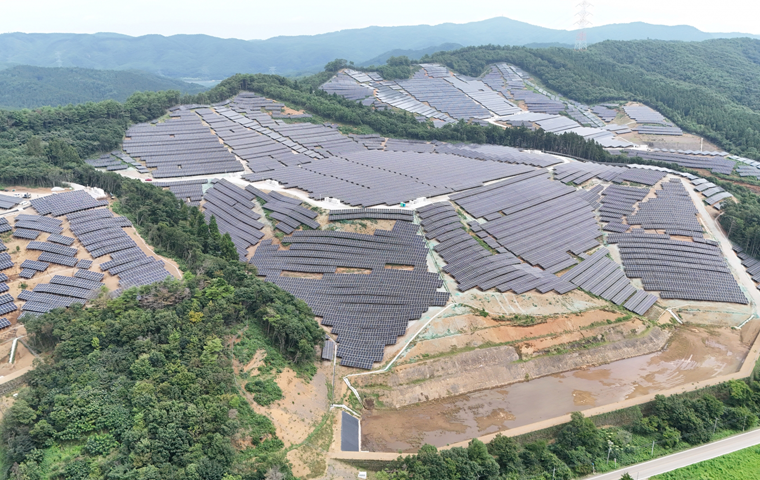Putting an End to Runaway Solar Power? Japan’s New Regulations
Related Articles
Government Shifts Toward Tighter Controls on Mega-Solar
On October 30, 2025, Japan’s energy policy reached a major turning point. Leading national dailies reported in unison that the government had decided to push through legal amendments to rein in the rampant development of large-scale solar power plants (“mega-solar”). This move fundamentally reconsiders how solar projects—until now rapidly expanded under the banner of renewable energy—should be carried out, and amounts to an official response to years of friction with local communities. In media interviews, Minister of Economy, Trade and Industry Akazawa acknowledged that improperly sited mega-solar projects pose challenges from the standpoint of “coexistence with local communities,” and stated clearly that the government would “strengthen discipline.” According to reports, the core of the new rules will be to strictly limit development in areas requiring special environmental consideration—such as habitats of rare species—and to reinforce monitoring.
This decision is anything but sudden. Then–Prime Minister Sanae Takaichi pledged legal regulation during the LDP leadership race, and the coalition agreement with the Japan Innovation Party also included implementing such rules; politically, the course had already been set. Rather than a newfound governmental interest in environmental protection, this is the result of a political judgment that the worsening social problems across the country could no longer be ignored. The moves mark an unavoidable first step toward correcting distortions created by past national energy policy and rebuilding a path to sustainable renewable deployment.
When “Green Energy” Causes Environmental Damage and Local Conflict

Behind the government’s belated resolve lies a sobering reality: solar power—supposed to be clean—has ironically spawned problems so severe that some now label it a form of “pollution.” A major newspaper’s survey found that fully 80% of Japan’s prefectures are grappling with troubles related to mega-solar projects, indicating nationwide spread. Issues vary, but the most serious is the heightened disaster risk from large-scale logging and land formation in forests. When forests lose their water-retention capacity, heavy rain more frequently triggers landslides and muddy runoff, directly threatening the lives and property of downstream residents.
There is also persistent criticism that destroying carbon-absorbing forests in the name of “decarbonization” is environmental damage in itself. Residents’ living environments have suffered as well: beloved mountain vistas blanketed with panels have marred the landscape, causing psychological distress. Powerful glare reflected by panels has become “light pollution,” hindering drivers’ visibility and endangering nearby residents. A symbol of these problems was a development plan around the Kushiro Wetland in Hokkaidō, a Ramsar-listed site of international importance. Many prominent figures, including noted mountaineer Ken Noguchi, sounded the alarm; a national opposition movement swelled beyond 110,000 signatures.
These conflicts can be traced to the Feed-in Tariff (FIT) system introduced in 2012, which—without adequate consideration for local environments or land-use planning—rewarded developers focused solely on maximizing output. In a mountainous country with limited flat land, it was almost inevitable that inexpensive forested slopes would become concentrated targets for development.
Local Governments’ Struggle Ahead of the State—and the Lag in National Law
With the central government slow to act, municipalities on the front lines strove to protect residents and the environment by enacting their own ordinances. Long before the current move toward national regulation, at least 175 cities, towns, and villages across Japan had implemented ordinances to place some net of controls over mega-solar development. These local rules were, in effect, self-defense to compensate for gaps in national law.
While the specifics vary, many designate landslide warning areas, nature parks, and scenic conservation zones as “controlled” or “prohibited” areas, imposing strong limits on development. Some municipalities—such as Itō (Shizuoka) and Tōno (Iwate)—went further, designating their entire jurisdictions as controlled areas and effectively subjecting all projects to stringent city review. Others required developers, as a condition of approval, to hold explanatory meetings for residents and sign agreements with neighborhood associations, thereby institutionalizing local consensus-building.
Yet these municipal efforts faced limits in legal enforceability, and developers often filed suits challenging the validity of the ordinances. This nationwide “patchwork of ordinances” also left businesses without predictability, discouraging sound investment. Pressure from below by residents and from developers seeking market stability ultimately moved the national government toward creating unified legal regulations.
Balancing Decarbonization and Community Coexistence: A Crucial Test for Japan’s Energy Policy

The tighter rules signal that Japan’s renewables policy has moved from an early phase of single-minded volume expansion to a more mature stage that emphasizes quality. The old “development-first” model, buoyed by high FIT purchase prices, no longer applies. Amendments to the Special Measures Act for Renewable Energy already oblige developers to hold resident briefings and to set aside funds for proper decommissioning and recycling at end of life—placing social responsibility across the entire project lifecycle. The new national regulations will cement this shift and make securing a social license to operate an absolute prerequisite.
Going forward, mainstream solar is likely to shift away from environmentally burdensome forest projects toward formats compatible with existing land uses: rooftops, parking lots, and agrivoltaics on fallow or under-utilized farmland. Expectations are also rising for next-generation technologies such as perovskite solar cells, which deliver higher efficiency with less area.
As Japan pursues the grand goal of carbon neutrality by 2050, it must simultaneously solve three hard problems: stable energy supply, environmental conservation, and coexistence with local communities. The latest regulatory tightening is a first step toward that challenge—and a proving ground for the true caliber of Japan’s energy policy.



